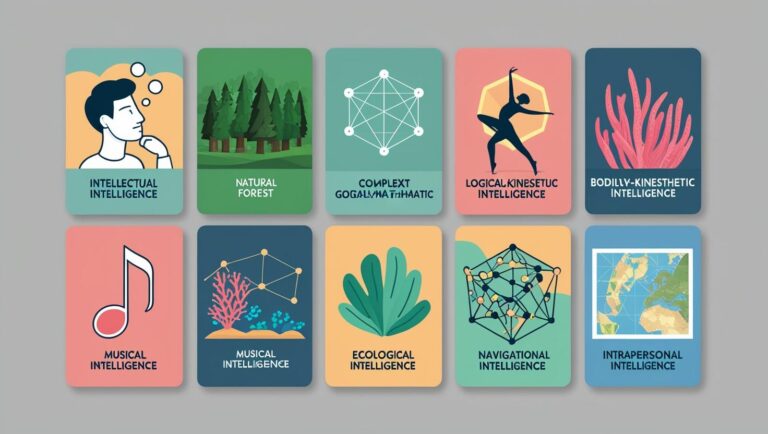Why Learning Styles Still Matter — Even If the Experts Disagree
Training and development in the workplace have gone through countless trends. A few years ago, the buzz was all about learning styles: visual, auditory, and kinaesthetic (VAK). The idea was simple: if you teach people according to how they learn best, they retain more and perform better.
Then the backlash came. Skeptics and academics argued that there wasn’t solid evidence supporting the effectiveness of learning styles. Critics claimed the theory was “outdated” or “debunked,” suggesting that everyone learns in multiple ways anyway.
If you’re a small business owner or HR professional, that debate can be frustrating. Should you ignore learning styles completely, or is there a middle ground?
The truth is, learning styles still matter — but not in the rigid, textbook way. They offer a lens to make training more human, practical, and effective. In this article, we’ll explore why learning styles continue to be relevant, how you can use them smartly, and how to avoid common pitfalls.
The Science Is Messy — But The Insight Is Real
It’s true: research on learning styles is mixed. Many studies suggest that teaching strictly according to learning style labels doesn’t necessarily improve test scores. That doesn’t mean learning styles are useless.
In the real world, especially in small businesses, people respond differently to the same information. Some staff absorb concepts best through visuals, such as flowcharts, diagrams, or colour-coded steps. Others need to hear it — through explanations, discussions, or repeated instructions. And some only really grasp a task once they physically do it themselves, learning through trial, error, and hands-on practice.
Think about onboarding a new employee in a café. One person might learn faster by watching someone prepare a coffee step by step (visual). Another might pick it up by talking through the process and asking questions (auditory). And another might need to make a few drinks themselves under supervision before it clicks (kinaesthetic). If your training only favours one method, someone will inevitably struggle.
The lesson? Learning styles aren’t about categorizing people. They’re about recognising variation in how individuals absorb, process, and retain information. When you acknowledge these differences, you can design training that actually sticks.
Learning Styles Help You Ask Better Questions
Even if you don’t formally assign people a “visual” or “auditory” label, thinking about learning preferences helps you ask smarter questions when designing workplace training. Instead of “How do I get everyone to learn this?” consider:
How does this person best absorb new information?
Would they benefit from seeing, hearing, or doing?
What methods will help them remember this in six months?
These questions shape onboarding, knowledge transfer, and skill-building programs. For example, if you’re onboarding a new administrative assistant, asking these questions might lead you to combine a short video tutorial (visual), a verbal walkthrough (auditory), and a shadowing session (kinaesthetic). That combination covers multiple preferences, increasing retention and confidence.
The key is flexibility. You don’t need a rigid system that labels every employee; you just need to pay attention and adapt. In doing so, you’re already ahead of most small businesses that treat training as one-size-fits-all.
You’re Already Using Learning Styles — Even If You Don’t Realize It
Many small businesses unknowingly accommodate learning styles every day. Think about these examples:
Sending a video tutorial instead of a long PDF manual.
Walking a team member through a process instead of only providing written instructions.
Allowing someone to sketch a diagram on a whiteboard to visualise a workflow.
Pairing a new hire with a hands-on mentor for a live demonstration.
These are all forms of practical, informal learning that cater to different preferences. The difference between effective training and missed opportunities often comes down to intention. When you actively consider how people learn, your informal methods become intentional, structured, and measurable.
For instance, a small retail business might notice that their stockroom team struggles with written SOPs. By introducing a simple combination of visual diagrams and step-by-step live demonstrations, mistakes drop, and productivity rises. The learning style lens didn’t change the content — it changed the delivery in a way that worked for the team.
How to Use Learning Styles Without Getting Lost in Labels
You don’t need quizzes, personality tests, or complicated assessments to accommodate learning preferences. Instead, focus on observation, experimentation, and flexibility.
Observe: Pay attention to how employees naturally interact with information. Do they sketch notes? Ask lots of questions? Jump in and try tasks immediately? Observation often reveals more than any test.
Ask: Simply ask, “Would it help if I showed you, talked you through it, or let you try it yourself?” Small questions like this can dramatically improve engagement and reduce frustration.
Offer options: Blend your training. For example, when introducing a new software tool:
Visual: Provide screenshots, diagrams, or short video tutorials.
Auditory: Walk through features aloud, host a Q&A session, or record a quick audio guide.
Kinaesthetic: Allow hands-on exploration with guided tasks or sandbox exercises.
By providing multiple ways to access the same material, you make training inclusive. Everyone gets an entry point that works for them, even if it’s not their only preference. This approach is particularly useful in small businesses where resources are limited but outcomes still matter.
Engagement Matters More Than Categorisation
The most important goal of using learning styles isn’t to label your employees or fit them into boxes. It’s to increase engagement, retention, and confidence in applying new skills.
Imagine training a new barista solely through written instructions. The person struggles, feels frustrated, and eventually makes mistakes under pressure. The training itself is technically correct, but the method didn’t match the learner’s needs. That’s a failure of delivery, not content.
Engagement drives learning. When people feel seen, supported, and equipped to absorb information in a way that suits them, retention skyrockets. This is particularly critical in small businesses, where every hour counts and mistakes are more costly.
For example, a small marketing agency introducing a new project management tool might see vastly different results depending on how they deliver training. A single 60-minute lecture could leave auditory learners frustrated and kinaesthetic learners confused. But a blended session with visuals, discussion, and hands-on practice ensures that everyone can understand, remember, and apply the new system effectively.
Practical Tips for Applying Learning Styles in Small Businesses
Blend methods by default: Whenever you teach something new, use more than one mode. Even small gestures, like adding a quick diagram to an email tutorial, can make a big difference.
Start with observation: Notice which employees pick up concepts fastest through demonstration, discussion, or self-exploration. Use this information to tweak your approach.
Use peer-to-peer teaching: Pair employees with complementary learning styles. A visual learner might benefit from hearing an auditory learner explain a task, reinforcing understanding for both.
Check comprehension, not just attendance: Ask employees to demonstrate understanding, either by explaining back, performing the task, or creating a visual representation. This ensures learning actually sticks.
Keep it simple: Small businesses often don’t have the resources for complex LMS platforms. Use simple tools like whiteboards, WhatsApp videos, printed diagrams, or hands-on shadowing. Clarity and relevance matter more than production value.
Learning Styles in the Context of Modern Workplace Training
Even as the debate over learning styles continues, their relevance is clear in real-world applications. Modern workplace learning isn’t about rigidly following academic theory; it’s about practical, human-centered approaches.
For example, remote teams now often rely on video calls, screen shares, written guides, and interactive simulations. A blended approach accommodates different preferences, boosts participation, and increases adoption. Small businesses benefit because they can achieve more effective training without needing large budgets or external consultants.
Moreover, recognising learning preferences can inform long-term development plans. Employees who respond well to hands-on practice might be ideal candidates for mentorship roles, while those who thrive in discussion-based learning could become peer trainers or facilitators.
Final Thought: Learning Styles as a Tool, Not a Rule
Learning styles aren’t a magic formula, nor are they the only way to improve training outcomes. But in small businesses, they offer a practical lens for designing training that sticks, engages, and empowers employees.
The takeaway is simple: don’t over-rely on learning styles, but don’t dismiss them either. Observe, adapt, and offer options. Make training human, inclusive, and practical.
When you meet people where they are, your training becomes more than a checklist. It becomes an investment in skills, confidence, and long-term performance.
In the end, learning styles aren’t about labels, tests, or debates. They’re about helping your team learn, grow, and contribute — in ways that actually work for them. And that, in a small business, is priceless.



